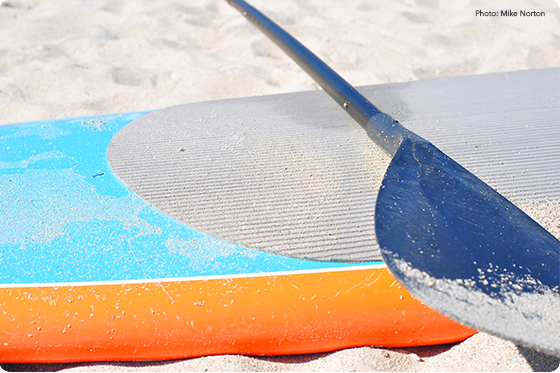
After a man drowned in the Santa Barbara Harbor while using a rented stand-up paddleboard (SUP), his survivors filed a wrongful death and survival action against the company and its owner in California state court. The rental company then filed an admiralty action in federal court seeking to limit its liability to the value of the SUP. The district court dismissed the admiralty action for lack of subject matter jurisdiction. On appeal, the Ninth Circuit agreed.1
Although the traditional test for admiralty jurisdiction requires only that the incident occurred on a navigable water, tort claims invoking admiralty jurisdiction must meet both a location and a connection test.2 The location test requires that the alleged tort occur on navigable waters. The connection or “maritime nexus” test requires that the incident must 1) have the potential to disrupt maritime commerce and 2) the general character of the activity giving rise to the incident must have a substantial relationship to traditional maritime activity.
The district court held that the alleged tort met the location test but failed the connection test. Since the drowning occurred in Santa Barbara Harbor, a navigable water, the plaintiffs satisfied the location test. The district court also found that the incident met the first prong of the maritime nexus test—the disruption to maritime commerce. The district court relied on previous Ninth Circuit rulings, which followed several U.S. Supreme Court decisions and broadly interpreted what types of incidents could potentially impact maritime commerce. The court noted that the Ninth Circuit previously found admiralty jurisdiction applicable in a tort case concerning non-commercial jet skis in an area reserved for jet ski use, due to the impact on maritime traffic following the incident.3 Likewise, in this case, Harbor Patrol performed search and rescue operations that may have disrupted maritime commerce.
However, the court could not agree that the activity met the second prong of the connection test—a significant relationship to a traditional maritime activity. The court noted that “the relationship between the innocent operation of SUPs and traditional maritime activity is virtually non-existent and, therefore, too attenuated to require the application of special admiralty rules to this case.”4 In a footnote, the court stated “according to the United States Coast Guard, a paddleboard only qualifies as a vessel ‘when used beyond the narrow limits of swimming, surfing, or bathing area.’ U.S.C.G. Memorandum, “Legal Determination on Vessel Status of Paddleboard,” Oct. 3, 2008. Because the SUP in this case was operated within Santa Barbara Harbor, it was not operating beyond those limits and, thus, does not qualify as a vessel.”5 The court also rejected the plaintiff’s argument that the use of a paddle with a SUP makes the SUP similar to a kayak or rowboat.
The Ninth Circuit agreed with the district court’s assessment. The appellate court focused on the second prong of the connection test, finding the character of the activity leading to the incident had neither maritime flavor nor a close relation to activity traditionally subject to admiralty law. The court dismissed the case for lack of subject matter jurisdiction.
1 In re Blue Water Boating, Inc., No. 18-55575, 2019 WL 6525202 (9th Cir. Dec. 4, 2019).
2 Jerome B. Grubart, Inc. v. Great Lakes Dredge & Dock Co., 513 U.S. 527, 531, 115 S. Ct. 1043, 1047, 130 L. Ed. 2d 1024 (1995).
3 In re Mission Bay Jet Sports, LLC, 570 F.3d 1124, 1128 (9th Cir. 2009).
4 Complaint of Blue Water Boating, Inc. v. Mubanda, No. CV 18-1231-JFW(ASX), 2018 WL 6075356 (C.D. Cal. Mar. 27, 2018).
5 Id.












